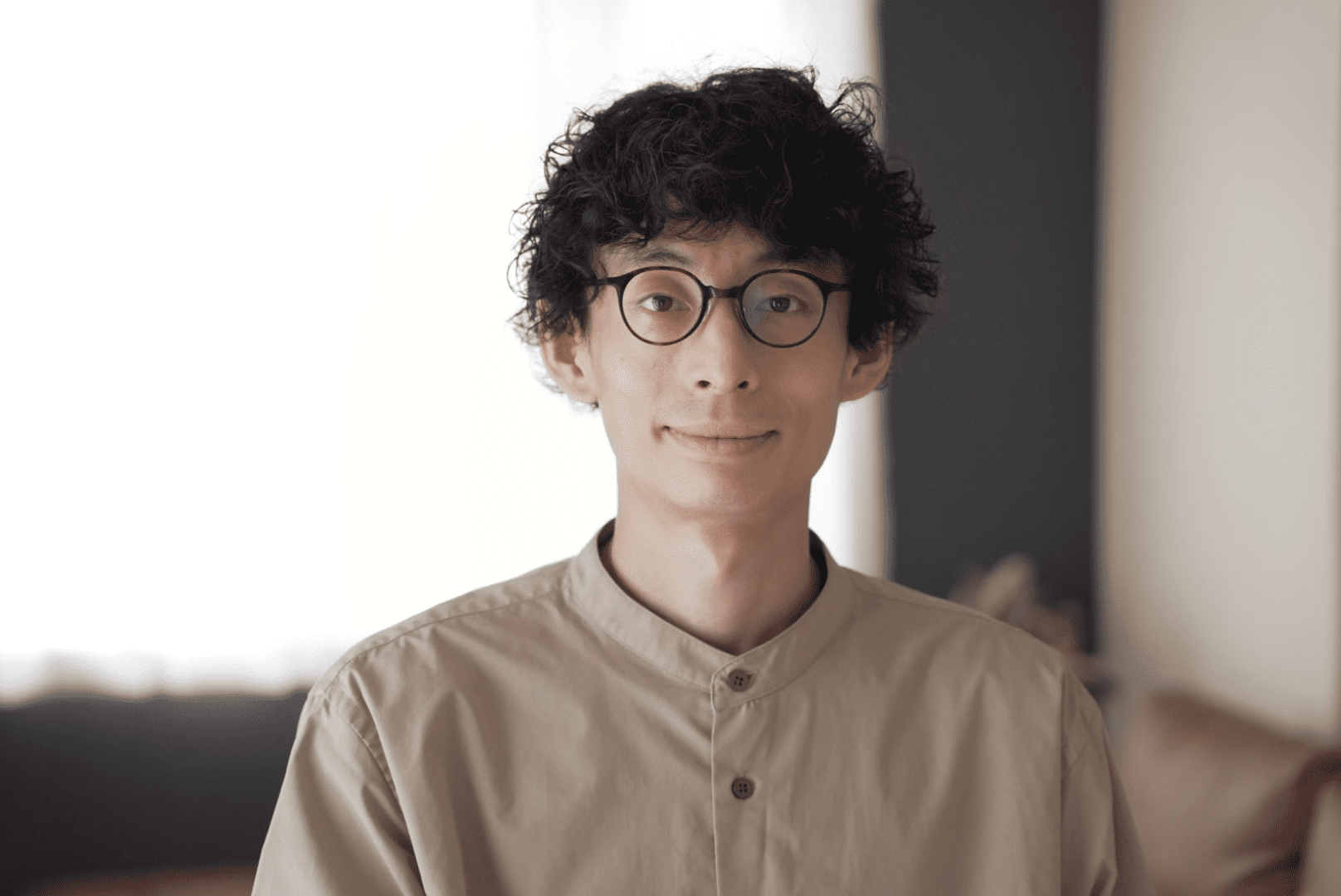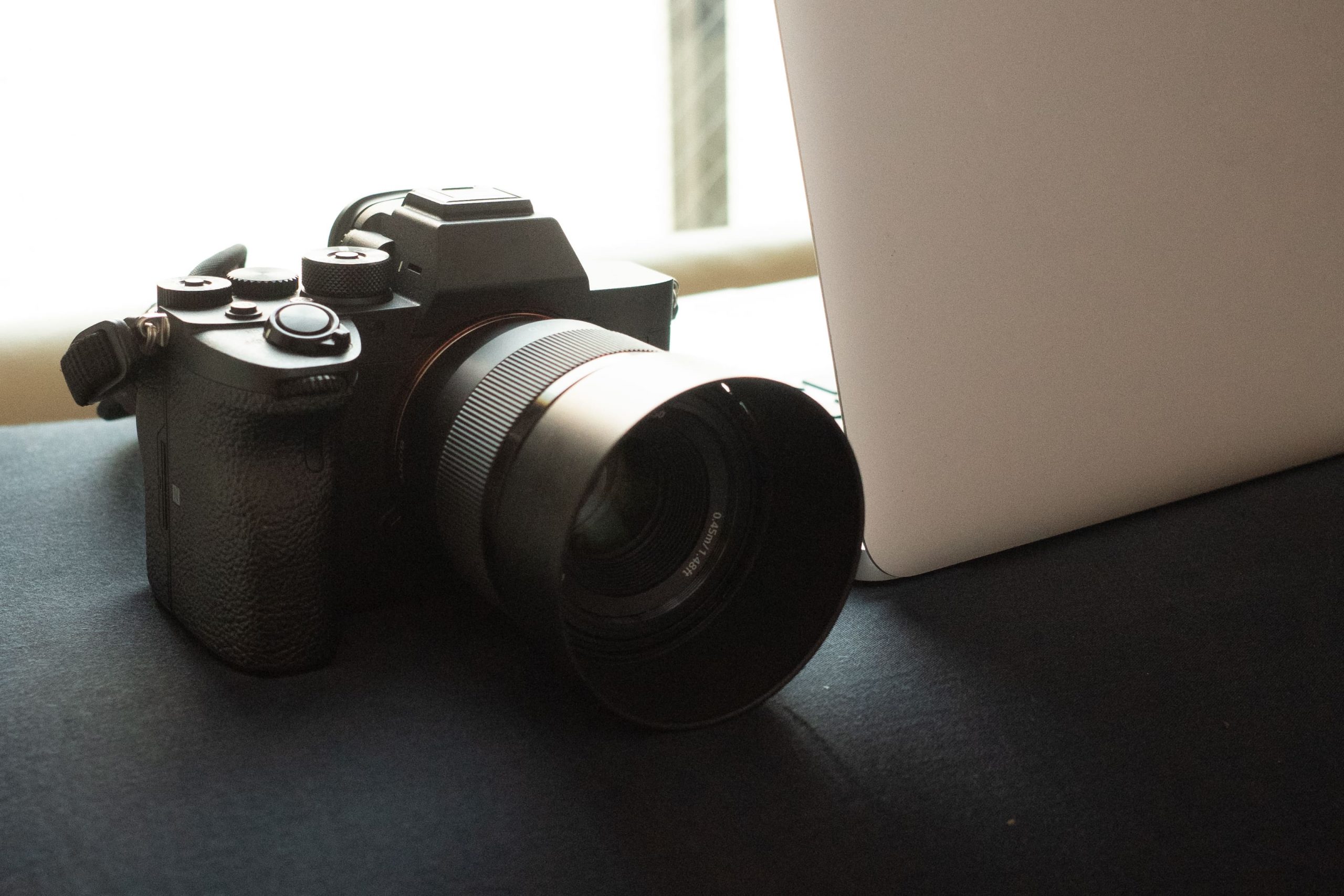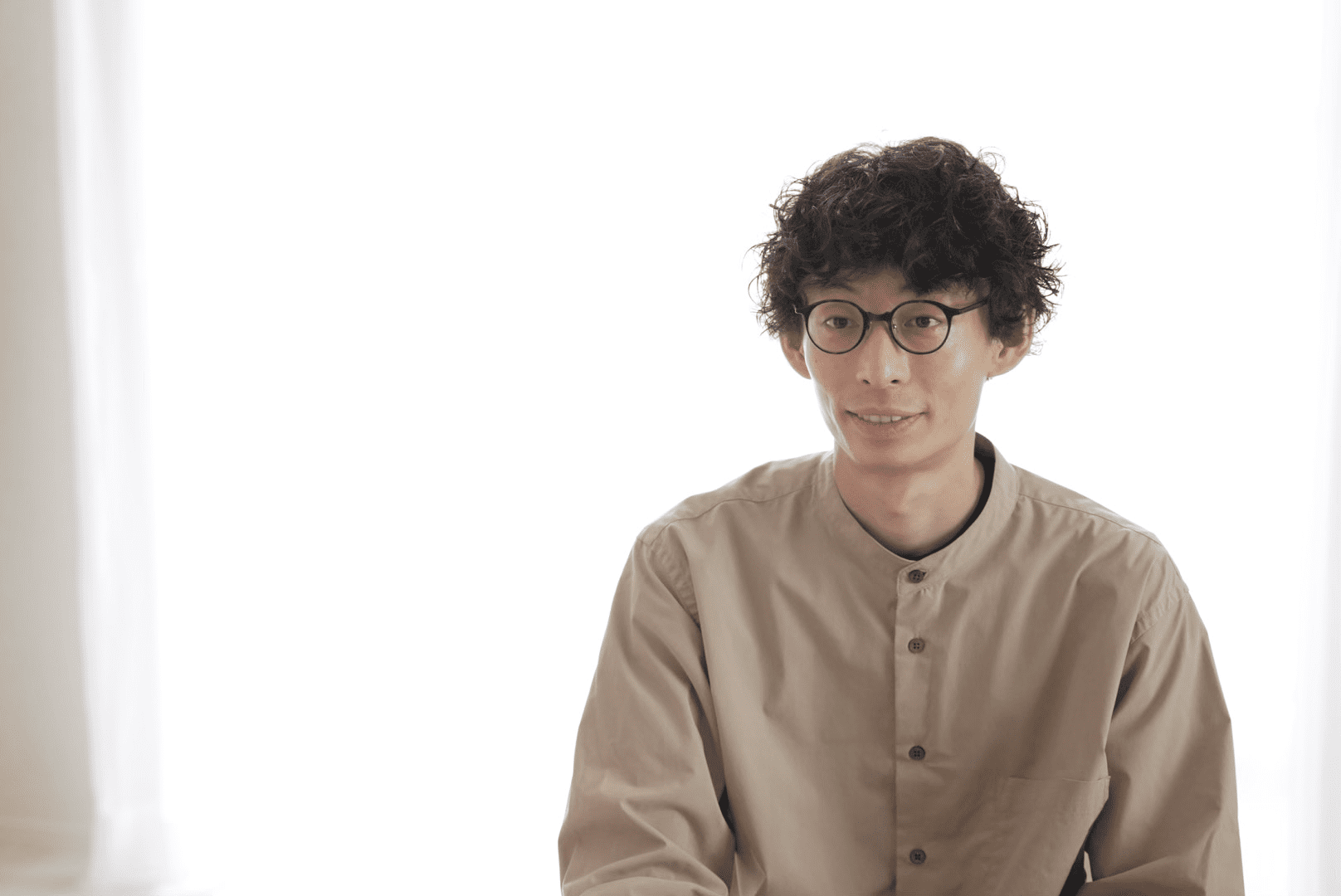Creators in BANDAI NAMCO Studios (BNS) work passionately to create games that everyone can enjoy. But what exactly is the source of their passion?
This series of articles will talk about how the creators at BNS apply things and experiences they like to game development.
We’ve asked Hiroaki Taniguchi, creator of cinematics at the Visual Works Unit of BNS’ Technology Studio, Creative Department, to be the second entry in this series. We asked him what it meant to be both an artist and a creator, as well as what he thinks are important traits for cinematics creators.
What part of the job does cinematics creator Hiroaki Taniguchi enjoy?

Hiroaki Taniguchi, creator of cinematics
Affiliation: BNS Technology Studio,
Creative Department, Visual Works Unit
―――Thank you for your time today. Tell us a bit about yourself!
I work at the part of the studio that creates cinematics and directs art for all studio projects.
As a cinematics artist, I do things related to camerawork and previs* for trailers, promotional videos, and in-game cutscenes used by BNS’ games.
I also design any materials needed for these cinematics, so my daily tasks are pretty varied.
*Short for “pre visualization”, a process to visually map out a cinematic before actual production. Previs lets artists understand the overall flow of a cinematic more easily, reducing the number of retakes, reducing delivery times, and controlling costs.
―――So what part of your job do you feel is fun?
It’s both fun and rewarding when I find out how users react to something that we’ve created. More and more people post their reactions on social media recently, which gives me a larger number of opportunities to see user opinions.
I am genuinely happy when I see positive reactions, like when people call something I worked on awesome or adorable. It gives me motivation to make something even better next time.
Of course, when I see negative reactions, like comments about what users felt was lacking in a title, I think about what went wrong and try to apply this knowledge in the next thing I make.
The reactions of people outside Japan are usually stronger than the ones we receive domestically, so reading their reactions is more exciting. Like I just mentioned, I can immediately look for reactions on social media now, so it feels really rewarding to see the opinions of people from around the world right after a launch.
Being able to see user response this directly might be something you can only experience with the games industry.
I used to work at a video production company where I made video footage for commercials and events. It was pretty rare for a viewer to give feedback about a particular part of a video that they liked, but the opposite seems to be the case for the games industry.
―――Can you share a story that’s left a lasting impression on you?
Some work I did on matching a camera’s movement with a dancing character was memorable. We were planning our shots for the character to be in sync with the music, and we put a lot of effort into the camerawork to make sure that the camera was always pointed at the best angle for the character.
Although I didn’t have a deep knowledge of cameras when I was assigned to that project, three senior members in my department had really good technique and artistic taste. These three people kindly shared their knowledge with me, and I got to learn about good camerawork.
This was a project where we had to pay attention down to the single frame level and think critically about whether a shot is one frame too slow, or about whether individual shots are necessary or not. Due to this, we managed to create visuals that looked well-composed throughout the entire song regardless of the frame you paused on.
This experience was very useful when deciding the camerawork for other projects I would later work on. I thank the three people who were nice enough to teach me way back then!
―――It sounds like you put a lot of thought into your work!
I also think about things like the lens’ angle of view for each shot!
For example, I often use a wide-angle lens for high-angle shots that show the entire background so that I can bring out more depth in the shot. Or I use a telephoto angle for close-ups so the characters’ faces wouldn’t get distorted. Every creator on the team puts in a lot of work to ensure that the characters look cute at any single moment.
We also make camera movements slow and gradual for more relaxed music, and use harder camera movements with faster shots for more up-tempo music.
With the amount of effort we put in, we reach a point where we’re absolutely sure the characters look nice regardless of where you stopped the footage!
I always felt happy when the time to release a video to the world comes around and I get to see people say that the camerawork or the video was awesome.

―――Are there times when work feels frustrating?
Maybe when I can’t find a good answer to something.
In cinematics, there’s more than one way to deliver the message you want to tell to your viewers.
Every day, I have to think about and make decisions on things like “What’s the most effective camera angle?” “How long should it be?” “Should we use anime-like or photorealistic CG?” “Do we even need this shot?”
We have to think about the best solution from a limitless number of options, while at the same time considering our budget and schedule. It’s fine when we can immediately find an answer, but we end up taking a lot of time when we can’t. This part of my work is pretty rough.
Even parts that just “don’t feel right” to us will be noticed by the viewer. It’s discouraging when we can’t find an answer to this type of problem.
This is why I try to expand my repertoire of cinematic direction as much as possible, so that I don’t run into the situations I just mentioned. Of course, the repertoire does not have to be cinematics-related. I sometimes draw reference from everyday life or my hobbies, even from unexpected places. As such, I think it’s important to always keep an eye and ear out, and to try and experience many things.
Hmm… I feel like anyone reading this interview would think that there’s lots to worry about in my job, but that’s part of the fun!
―――Is there anything you try to keep in mind as you work?
I think the basics are the most important part of any camera or lighting-related cinematic production. It doesn’t matter how complicated the shot I’m making is, I start from the basics and work from there.
No matter how much technology advances, the underlying knowledge is the same. You still need to be knowledgeable about cameras used in real film even if you’re only making CG graphics, and having this knowledge lets you make something look more interesting.
Oh, and I was told by my seniors and bosses to always remember to “Never miss deadlines! Always be professional!”
People say that this is one of the things that separate “artists” from “creators”.
When making something, people sometimes lose track of time trying to make it the best it can be. In other words, you can potentially spend forever on brushing up your work.
But I realized something after a talk with one of my seniors.
They said “It’s normal to be able to make something good with infinite time and budget, but we are creators. This means that while we are artists, we must also think of our work as a business. We need to be able to create the best possible thing with the restrictions we’ve been given.” In other words, cost effectiveness.
Although it’s not good to be too restricted by these things, I try to balance time and cost to make the best cinematics I possibly can.
―――Those are some pretty harsh words.
Well, I think I was told this because not many people are actually capable of doing it. If you think about it the other way around, you can set yourself apart from others by just keeping this in mind. Maybe it’s important for creators to also have a business mindset.

―――Is there anything you’re super-confident in doing?
I’m actually pretty good at making things “look good”. I’m sure my fellow creators reading this have been told before to just make something that “looks good” at least once in your life (laughs).
When someone tells me that they “want this part to look good” or “it’s fine as long as it looks good”, I think about what they mean by “look good” every time. It may sound simple but is actually pretty difficult since everyone has their own preferences.
My idea of making something “look good” is to think carefully about the background and worldbuilding of the thing I’m working on and give shape to what the client is thinking of in their head.
I feel that I’ve been “well-trained” (laughs) by my previous job, where I had to meet with all types of clients and handle every step of the process alone, from initial discussion, to writing proposals, to finally producing cinematics.
One thing I would like to learn more about is the concept of “narrative design”. It’s difficult to explain in one sentence, but narrative design refers to a design approach where the player interprets their playthrough of a game as their own personal story. Applied to my work, maybe it would be the method with which I direct cinematics that suck the player deeper into the game.
―――To wrap up, could you tell us one of your guiding principles?
“All’s well that ends well”
I have fun at work normally as I get to work on large-scale titles and it’s very fulfilling. However, not all of it is fun and games, and sometimes I would run into hardships.
I’d run out of ideas, or I wouldn’t be able to find a solution to something. Something I made wouldn’t look good. But I forget about all of the troubles I had when I see the happy reactions of the people who look at my work!
“All’s well that ends well” is something I hold dear to my heart.
―――I guess the most rewarding thing is to have people enjoy your work! Thank you for your time, Taniguchi-san.





